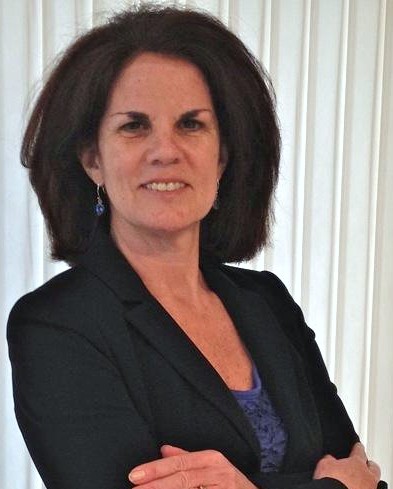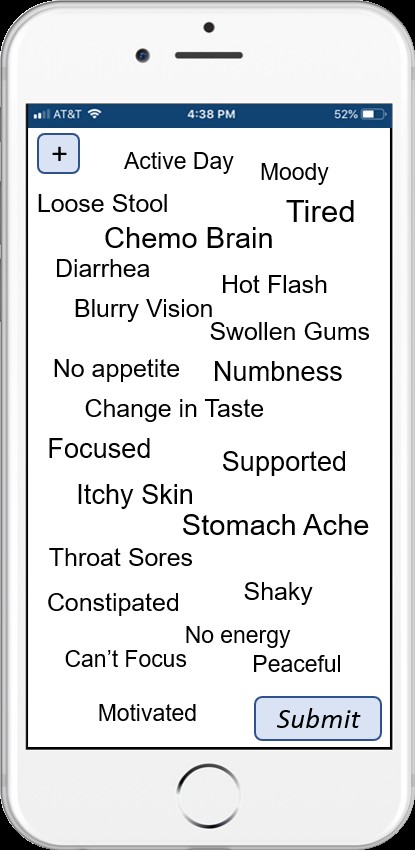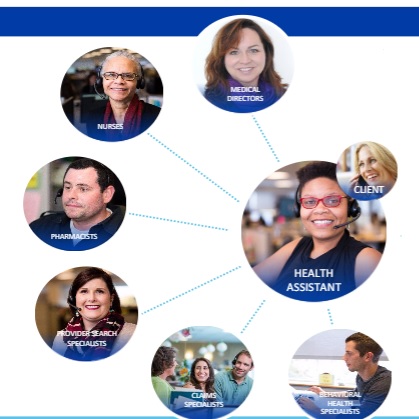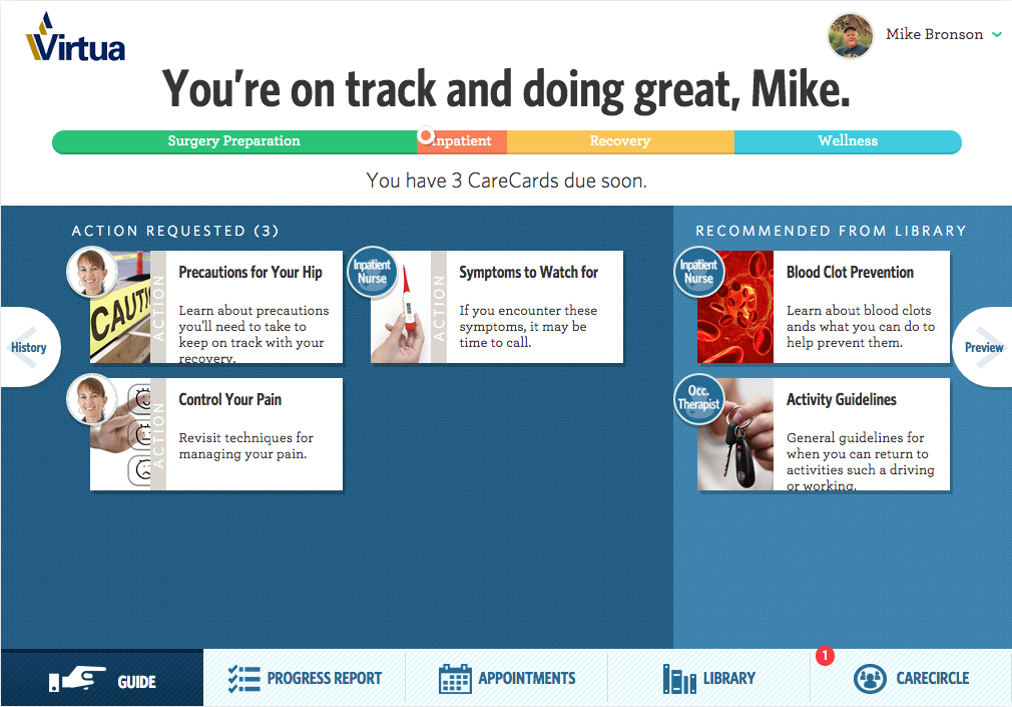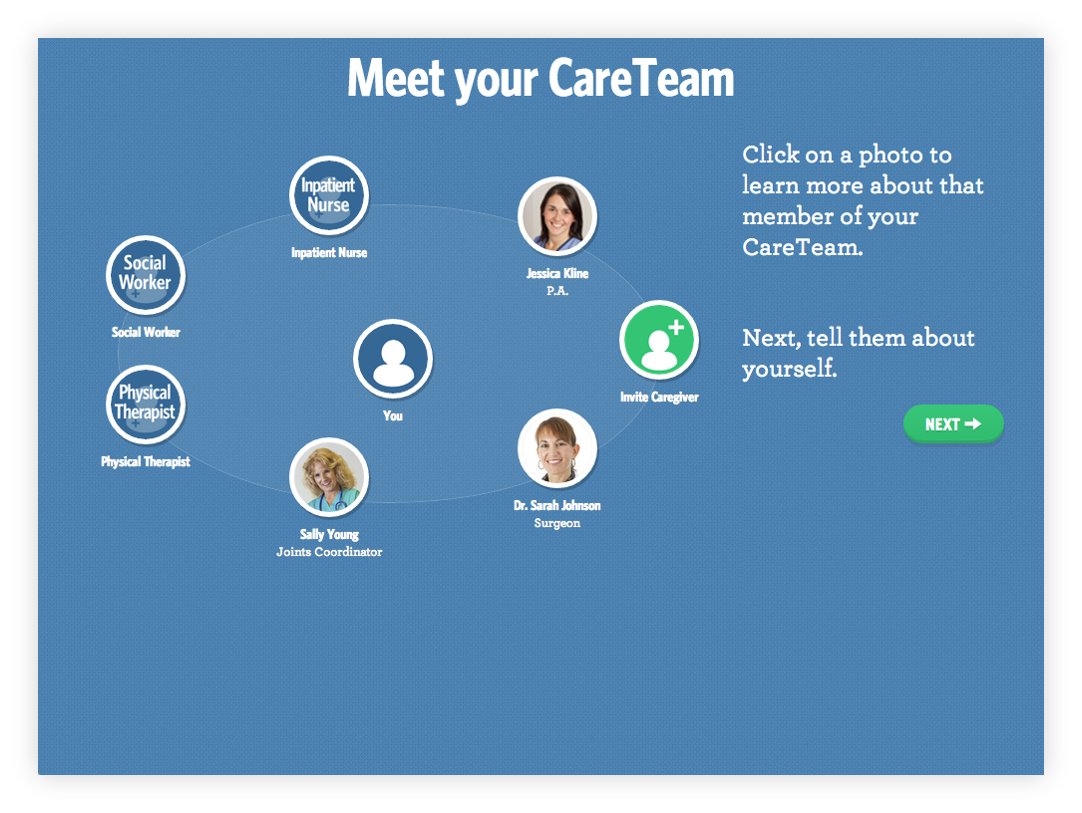 According to the 2019 Accenture Digital Health Consumer Survey, patient’s expectations are increasing for providers to offer digital capabilities. Patients value convenience (appointment times, location) and are increasingly considering “non-traditional” service channels such as retail clinics and virtual care.
According to the 2019 Accenture Digital Health Consumer Survey, patient’s expectations are increasing for providers to offer digital capabilities. Patients value convenience (appointment times, location) and are increasingly considering “non-traditional” service channels such as retail clinics and virtual care.
Providence Health’s Innovation team continuously monitors these trends to identify ways to deliver a better patient care experience. “With the tremendous growth of chatbots and voice assistants, we decided to develop a virtual health assistant and begin to understand how to support the patients in their search for care”, explains Maryam Gholami, Chief Product Officer at Digital Innovations, Providence Health.
In fall 2018, Washington State based Providence St Joseph started developing and testing Grace, a chatbot which asks the patient about their symptoms and based on their location, time of the day and scope of services provided in various care options (virtual, clinics, or At Home) directs them to the best care. Eventually Grace was enhanced to also address frequently asked questions by patients.
Since the healthcare system is complex for consumers to navigate, Providence Health designed their digital tool to provide answers and guidance to help the patient find the right care and make the best care decisions. For example, a consumer may not know which modality of care to use (e.g. Emergency Room. Urgent Care, Retail Clinic, Virtual/Telehealth) or what symptoms trigger an immediate visit.
On the consumer side, Providence Health wants to stay aligned with their patient’s increasing expectations for service on demand. Consumers are already using digital assistants for shopping, banking and travel 24x7.
“From a business perspective, we want to provide accessible, convenient and affordable care. Therefore, we need to improve operational efficiency, free-up professional caregiver capacity for the right care and tasks, while increasing the care options and quality for consumers. We want to have our virtual health assistant take on the administrative tasks so that our clinical staff can focus on patient care. For example, Grace conducts a virtual patient intake to schedule a visit, collecting information such as reason for the visit, demographics, insurance and payment details”, explains Maryam. “This digital health assistant also assesses the best modality of care based on patient’s input and availability of care, matching the right resource to meet each patient’s needs. With this type of service navigation, Providence Health can ensure that the required license level is designated for the visit, reducing care cost and ensuring availability of providers for the appropriate level of care. Healthcare is supply-constrained, so this is a very important value.”
Patient Experience with Grace Bot
Providence Health has worked closely with the patients to design the Grace bot. Here is a look into the patient experience.
Patient Patricia who lives in Washington State, types her symptoms into Google to figure out what she has and where she can get care. Within her search results, Patricia sees a Providence Health website link and then meets Grace, a pop- up text chatbot ready to help her.
The Grace bot helps Patricia in two important ways:

1. Care Navigation: Given that Patricia needs “same day care” and has a low acuity health problem, she types into the Grace bot that she has a fever and sees that Grace has recommended a virtual visit or a same day clinic appointment. Patricia provides her zip code, chooses the clinic near her house and schedules an appointment for 7 PM that evening.
2. Customer Service/Concierge: Patricia has questions about whether her insurance is accepted and types in “what insurance do you take?” Grace provides a list of insurance options. Patricia can also ask for information to read about her health problem before her visit.
Patient Experience with Grace Bot
The Grace bot was designed for patients by patients. Throughout the development process, the product team at Providence Health worked closely with patients to understand the “tasks they were trying to complete” and defined how Grace needed to guide them through these steps. During testing, the team monitored where patients dropped off and tuned the messages to “optimize” their care journey.
“We are digging into the questions that our customers ask so that we can improve our knowledge base. This enables Grace to better respond to our patient questions”, Maryam explains.
With ongoing patient feedback, Providence Health has identified and has been addressing several areas to improve the patient experience.
Chatbot Persona: Maryam shares that “we used emojis to make the digital interaction more casual and friendly. Our patients did not like the emojis because they felt emojis do not convey trust which is essential when communicating health information. Patients also needed to feel comfortable that the responses and recommendations were not coming from a human. We are working on the right persona for Grace and defining the best interaction”.
Chatbot Behavior: Providence Health’s product team is determining when Grace needs to confirm information with the patient so that it accurately reflects her needs. There is a fine line between repeating back to be sure and being annoying to the patient who is looking to quickly complete her task (e.g. set up a visit). However, there is a risk of sending the patient to a modality that does not meet her needs (i.e. she needs to see a doctor and not an RN). “We need to understand the clinical operations from end to end so that we can define the business rules to successfully guide the patient interaction”, Maryam comments.
Consumer Adoption: Some patients are pleasantly surprised about what the Grace chatbot can do for them. Others may not understand what to ask her. Health organizations will need to educate consumers on the types of questions to ask so that patients can gain the most value when engaging with the bot.
Provider Adoption: Providence Health is working on enabling the Grace bot to support virtual care. Grace can engage with the patient to capture information prior to the telehealth visit. However, we need to ensure that this is designed and implemented in such a way that clinicians can properly review all of the information captured before the visit begins and that we are not increasing provider burn-out. It needs to improve the experience for both patients and providers.
Patient Representative Experience: When the Grace bot “hands off” the patient for the scheduled visit or for further follow up, it is important that the representative knows that patient just engaged with the Grace chatbot, has the context and the information already collected and can address the patient accordingly.
Chatbot Success Evaluation
Maryam shares some key success measures for the Grace bot. “We currently know that over 42% of our patients who engage with Grace get answers to their questions or get help navigating to the right modality of care. 18% of these engagements result in completion of appointments booked with one of our ExpressCare Clinics (Urgent Care). We are also learning which questions Grace doesn’t know how to answer or which tasks she can’t currently complete. This learning is very important to help us with our future product direction and iterations”.
Patients interacting with Grace can navigate to Providence Health’s ExpressCare options based on a chief complaint or use a symptom checker before choosing recommended ExpressCare options. Providence Health is seeing a 90% accuracy rate for patients that have been directed to ExpressCare from the patient’s chief complaint.
According to Maryam, there are weekly meetings with the product analytics team to understand how patients are using Grace so that they can enhance the patient experience. “We measure every interaction in the funnel to understand if we’ve helped users complete their tasks. Some of these measure include # of click rates, # of patients questions answered, # of appointments booked, # of visits completed along with type of visits, and chatbot engagement when the customer support center is closed”, describes Maryam.
 At the end of each interaction, Grace asks the patient if he is satisfied with the task – “Was I able to address your needs today”? According to Maryam, about 40% indicate that the Grace bot met their needs. Providence Health is closely listening to patient feedback to increase the satisfaction percentage.
At the end of each interaction, Grace asks the patient if he is satisfied with the task – “Was I able to address your needs today”? According to Maryam, about 40% indicate that the Grace bot met their needs. Providence Health is closely listening to patient feedback to increase the satisfaction percentage.
Providence Health has received insightful patient feedback about the Grace bot experience:
“This was the first time I’ve seen something like that, I thought it was extremely helpful. It asked a lot of good questions to get me the right help.”
“I felt like it was really easy to get an appointment. Very quick automated responses got me to the right place.”
“I thought it was excellent. I research a lot of my own health issues, so I’m excited about this. Anything that can help me learn about my symptoms and what to do about them, I’m excited for it.”
“For me, it was kind of cold. If it could change the wording to make it more human it would be better. I’d prefer a more human touch to it. I think in this field personality is important, so work on making it more warm, caring, and friendly.”
Future Plans with Grace:
Providence Health is committed to enhance the Grace virtual health assistant experience for patients by:
Expanding the patient journey: Currently, Grace is available more in the discovery phase, when patients are searching for care options. “Next, we are incorporating Grace into the Virtual waiting room to gather intake information before the patient participates in the telehealth visit. Our goal is to have Grace available when/where appropriate to help consumers navigation through health journey”, Maryam adds. “We are looking to move beyond low acuity to helping patients find and book PCP and Specialty appointments”.
Increasing the personalization: While Grace currently does some personalization based on consumer’s location, time and symptoms. Providence Health believes there is still a great deal of opportunity to leverage various sources of data including patient records. They will proceed carefully given the consumers’ data security and privacy needs.
Improving the High Tech & High Touch Collaboration: “We view our virtual assistant as an augmentation tool for our professional caregivers. We are working on creating a warm hand off to human caregivers with the conversation context. We are designing these tools so that based on consumer’s choice, human caregivers can step in to assist our patients”, explains Maryam.
Providence Health’s clinical and business leaders believe that offering these virtual health assistants are essential to delivering the best care experience for the patient, today and in the future.
“We are levering technology to connect the consumers to the right place for care with the right service and providers at the right time. AI is going to help us to improve the seamless experience.” Thanh Nguyen, Executive Director and Chief Clinical Officer of Express Care
“AI-powered virtual assistants will have a significant impact on healthcare by engaging consumers through voice/chat, a more natural way of interaction, and by intelligently automating mundane tasks and simplifying complex ones at scale.” Aaron Martin, EVP, Chief Digital Officer
 Permalink
Permalink  chatbot,
chatbot,  consumer generated health and wellness content,
consumer generated health and wellness content,  educating consumers about health and wellness in
educating consumers about health and wellness in  AI,
AI,  Care access,
Care access,  Care collaboration,
Care collaboration,  Connected Health,
Connected Health,  Data Driven Health Engagement,
Data Driven Health Engagement,  Decision support,
Decision support,  Mobile Health,
Mobile Health,  Patient Decision Support,
Patient Decision Support,  Patient Engagement,
Patient Engagement,  Patient Experience,
Patient Experience,  Patient Journey,
Patient Journey,  TeleHealth,
TeleHealth,  Virtual Health Assistant,
Virtual Health Assistant,  digital health,
digital health,  patient health education
patient health education 
